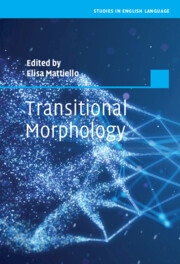Book contents
- Transitional Morphology
- Studies in English Language
- Transitional Morphology
- Copyright page
- Contents
- Figures
- Tables
- Preface
- Acknowledgements
- Abbreviations
- Chapter 1 Introduction
- Chapter 2 Background of Combining Forms
- Chapter 3 Dataset and Methodology
- Chapter 4 Neoclassical Combining Forms
- Chapter 5 Abbreviated Combining Forms
- Chapter 6 Secreted Combining Forms
- Chapter 7 Splinters or Combining Forms ‘in the Making’
- Chapter 8 Conclusions
- Appendix List of Combining Forms
- References
- Index
Chapter 8 - Conclusions
Published online by Cambridge University Press: 13 December 2022
- Transitional Morphology
- Studies in English Language
- Transitional Morphology
- Copyright page
- Contents
- Figures
- Tables
- Preface
- Acknowledgements
- Abbreviations
- Chapter 1 Introduction
- Chapter 2 Background of Combining Forms
- Chapter 3 Dataset and Methodology
- Chapter 4 Neoclassical Combining Forms
- Chapter 5 Abbreviated Combining Forms
- Chapter 6 Secreted Combining Forms
- Chapter 7 Splinters or Combining Forms ‘in the Making’
- Chapter 8 Conclusions
- Appendix List of Combining Forms
- References
- Index
Summary
The book ends with the conclusions that the three categories of CFs analysed range on a continuum from compound-like to affix-like, and consist of an open class of elements destined to expand, to include novel splinters and form new words.
- Type
- Chapter
- Information
- Transitional MorphologyCombining Forms in Modern English, pp. 204 - 211Publisher: Cambridge University PressPrint publication year: 2022

